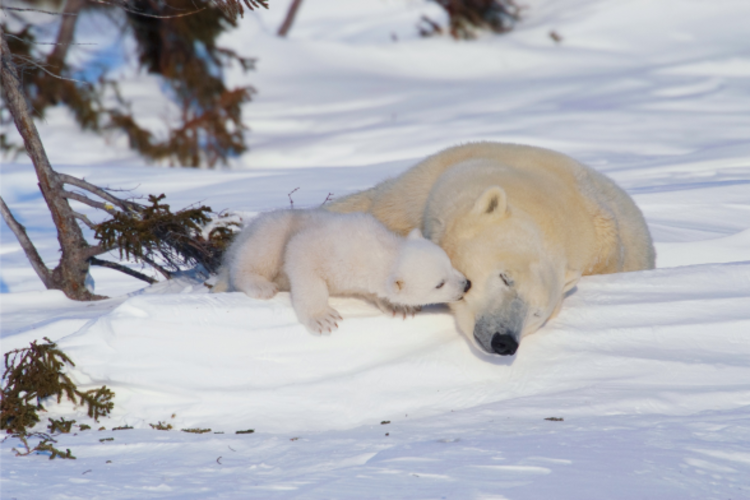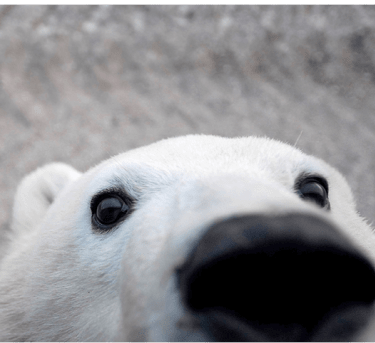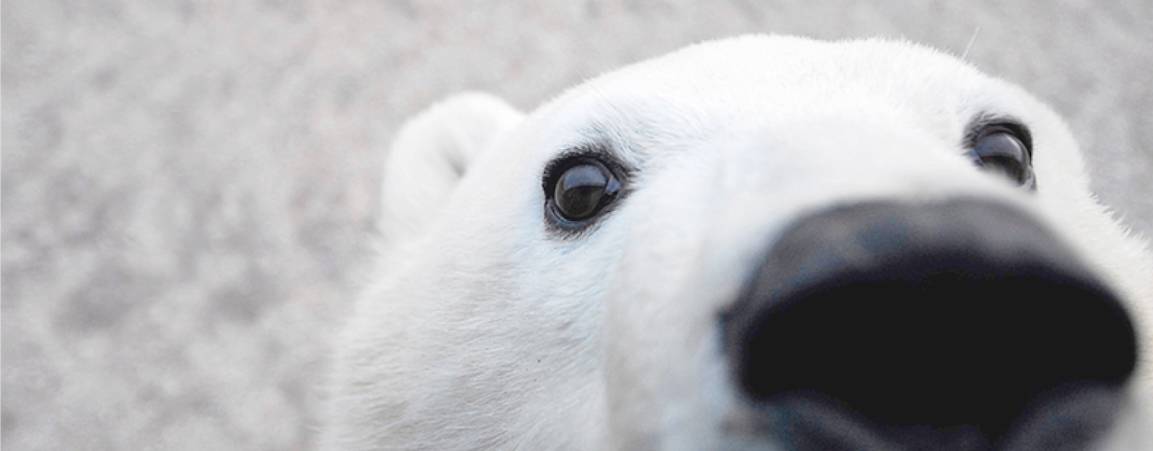Photo: DJI

Polar Bears International Drone Guidance
Responsible Drone Use Around Polar Bears
We understand that most drone operators seek to capture stunning photos and videos of polar bears in their natural habitat. While drones can provide incredible perspectives, it’s essential to use them responsibly to minimize disturbance and avoid the desensitization of bears to drones.
Flying drones around polar bears is still a relatively new practice, and we do not yet fully understand its impact on the animals or their environment. While drones can be valuable for scientific research, ice reconnaissance, navigation, education, and documentary filmmaking, their use requires careful consideration. Until more is known, we are taking a precautionary approach, prioritizing wildlife welfare and environmental responsibility. Our aim is to develop clear guidelines that allow for the safe and controlled use of drones while minimizing potential risks to polar bears and their habitat.
By adhering to best practices such as maintaining safe distances, using quiet and non-intrusive equipment, and carefully observing bear behavior, we can ensure that drones support wildlife conservation without negatively impacting the animals. This guide provides key regulations, operational guidelines, and ethical considerations to help drone operators fly responsibly around polar bears.
Before you arrive on site
Know the Local Laws and Regulations
Different regions have specific regulations regarding drone operations near wildlife. For example, in many protected areas and national parks, flying drones is either restricted or prohibited. This document outlines best practices, but more restrictive regulations may apply in certain regions. Always review local requirements by checking with:
Aviation authorities
Local law enforcement
Wildlife management agencies
Park officials
Private property owners
Local governing authority
Make a thorough plan
(see Drone Flight Plan & Wildlife Operations Checklist, below)
Objectives – Define the purpose of the flight (e.g., photography, research, monitoring, deterrence).
Legal Compliance – Verify and obtain necessary permits, follow Transport Canada and NAV Canada regulations, and consult local authorities if operating on Indigenous land.
Equipment Check – Ensure the drone is suitable for wildlife operations (quiet propellers, telephoto lens, proper registration, and pilot certification).
Flight Path & Location Assessment – Identify takeoff and landing zones, avoid crowded areas, and account for aerial obstructions and weather conditions.
Wildlife Impact Assessment – Evaluate potential effects on bears and other wildlife, avoid sensitive times (e.g., nursing, feeding), and plan for minimal disruption.
Safety Measures – Assign roles (pilot, spotter, bear guard), maintain a safe distance (minimum 300m launch, 100m max proximity), and establish emergency protocols.
Risk & Response Plan – Create a list of potential risks and outline clear action steps to mitigate them if they arise.
Battery & Retrieval Plan – Ensure enough battery life for the flight and plan for safe drone retrieval in case of failure.
Monitoring & Adaptation – Observe bear behavior and be prepared to adjust or abort the flight if signs of stress or disturbance occur.
Post-Flight Reporting – Record flight details, report any wildlife disturbances, and document any reckless drone operations observed.
Obtain Permits
In many cases, particularly in wildlife areas or when studying wildlife, permits are required for drone operations.
Assemble your team
Bear Guard: Always have a bear guard with appropriate deterrent tools monitoring for other bears and wildlife in the area. This is a separate role from the Spotter.
Spotter: Observes the target wildlife behavior for signs of disturbance
Pilot: Responsible for the flight, including drone maintenance and flight logs
Obtain Quiet and Non-Intrusive Drones
Consider quieter propellers and drones with telephoto lenses. This helps reduce the impact on animals' natural behavior and improves your ability to capture footage.
Our recommendation:
Mavic 3 Pro (or similar models)
A minimum of a 166mm zoom lens — 7X zoom for wildlife filming
When you arrive
Assess the location
Ensure your planned flight will avoid…
Other people (including wildlife spectators)
Wildlife other than your target species
Inclement weather conditions (icing, rain, snow, fog, etc)
Any aerial obstructions
During flight
Maintain a Safe Distance
To avoid disturbance, maintain VLOS (visual line of sight) with your drone at all times and maintain your distance:
Minimum launch distance from wildlife: 300 meters (about 900 feet)
Minimum distance from wildlife: 100 meters (300 feet) radius in all directions
Maximum flight distance: 500 meters (about 1500 feet) from your takeoff point.
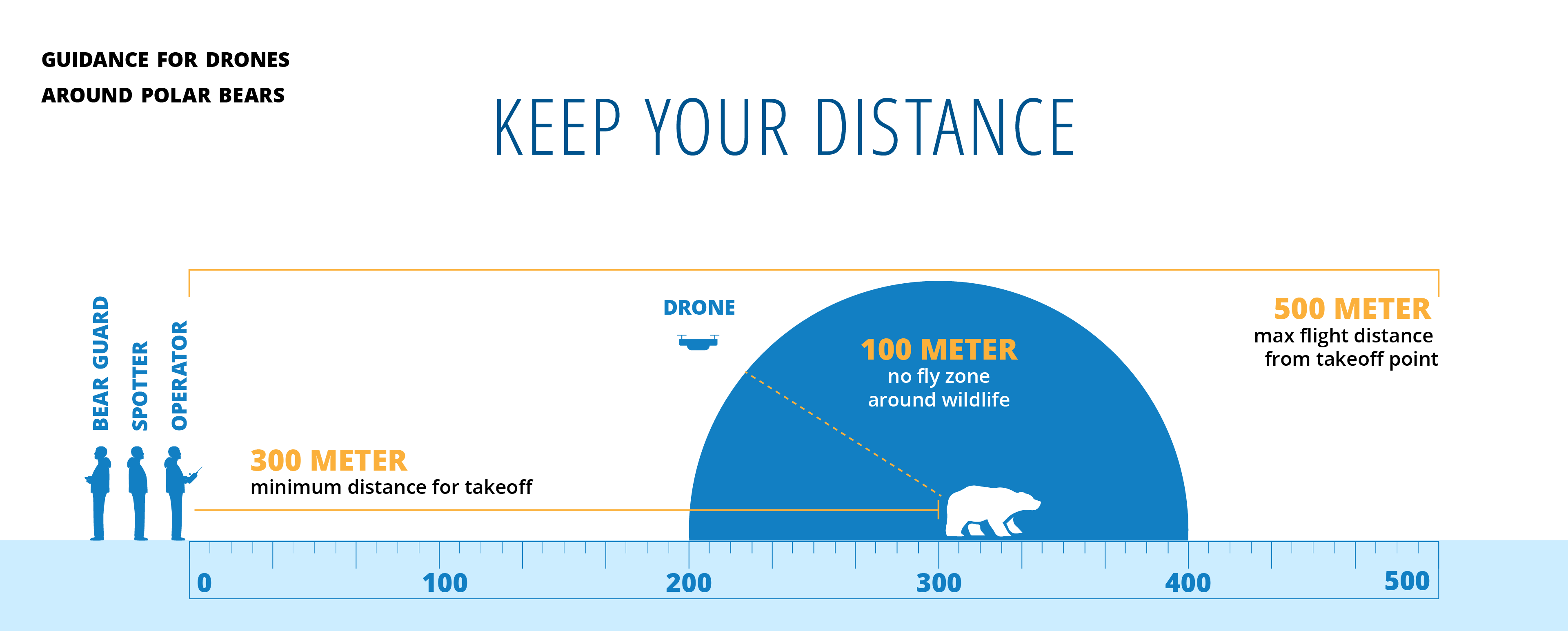
Avoid Direct Interaction
The noise and presence of the drone can stress the animals, disrupt their natural behavior, and potentially provoke aggressive reactions.
Do not fly directly at wildlife
Use a ‘lawnmower’ pattern to approach the bear from the sides
Do not change directions of flight over animals
Try to maintain a flight path that is downwind of the animal so propeller noise is carried away
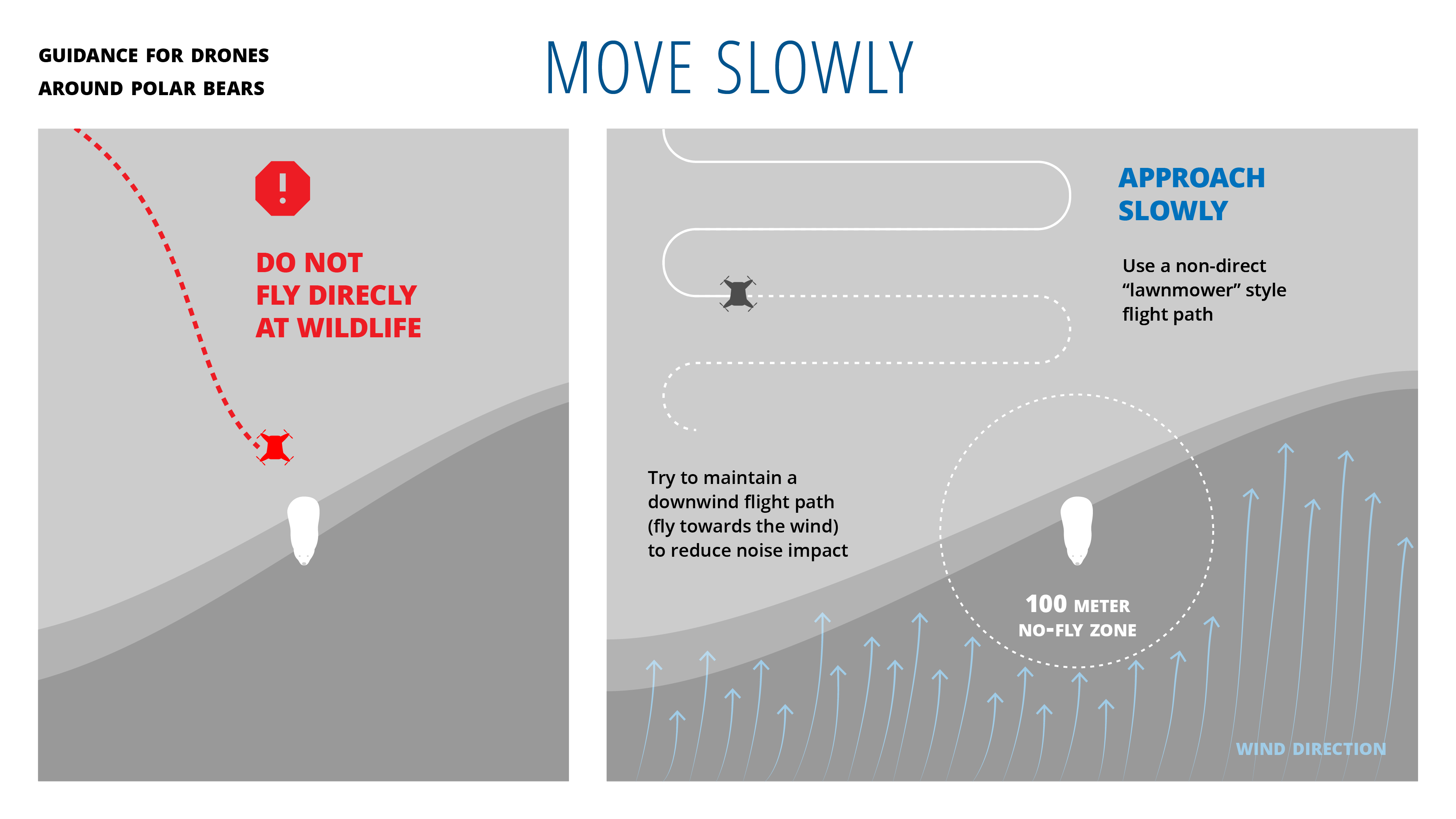
Observe Behavior and Adjust
If you notice any signs of stress or agitation in the animals, such as altered movement patterns or defensive behavior, immediately increase the distance between the drone and the wildlife or stop the drone operation.
Jaw popping
Ears back
Chuffing, huffing, any vocalization
Yawning
Always consider the context and be careful of disturbing animals that are feeding, resting, or otherwise more sensitive to possible disturbance.
Do not approach bears if they are:
Nursing families
Feeding
Skinny
Accompanied by cubs of the year
Accompanied by older cubs if disturbance could put them at risk, e.g. cubs could be scared towards a male bear
Limit Flight Time
Minimize the amount of time the drone is in proximity to wildlife. Extended exposure to drone noise and presence can lead to chronic stress and behavioral changes.
Flights must be less than 20 minutes
Limit your activity to a single flight if possible
After the flight
Report disturbances
Disturbances caused by your drone
If wildlife is negatively impacted by your operation you must contact regional authorities to report it.
Disturbances caused by others
If you observe another operator acting recklessly, collect the following information and share it with the appropriate contacts above:
Operator Information:
Drone operator’s name (if known)
Drone company (if applicable)
Contact details (if available)
Drone Details:
Make/model of the drone (if identifiable)
Color and other distinctive features of the drone
Flight pattern or behavior (e.g., altitude, proximity to wildlife)
Incident Details:
Date and time of the incident
Exact location of the incident (GPS coordinates, landmarks, etc.)
Description of reckless behavior (e.g., flying too close to wildlife, violating altitude restrictions, etc.)
Any visible impact on wildlife or disturbance
Any visible impact on other tourism operators
Supporting Evidence:
Photographs or videos (if safely possible) that show the operator, drone and polar bear, ideally in a single photo to provide full context if possible
Witnesses or bystanders who observed the incident
Links to content collected on social media or via other outlets
Once collected, promptly report the information to the appropriate authorities or contacts, including local tourism operators, relevant regulatory bodies, to help address the issue and ensure enforcement.
